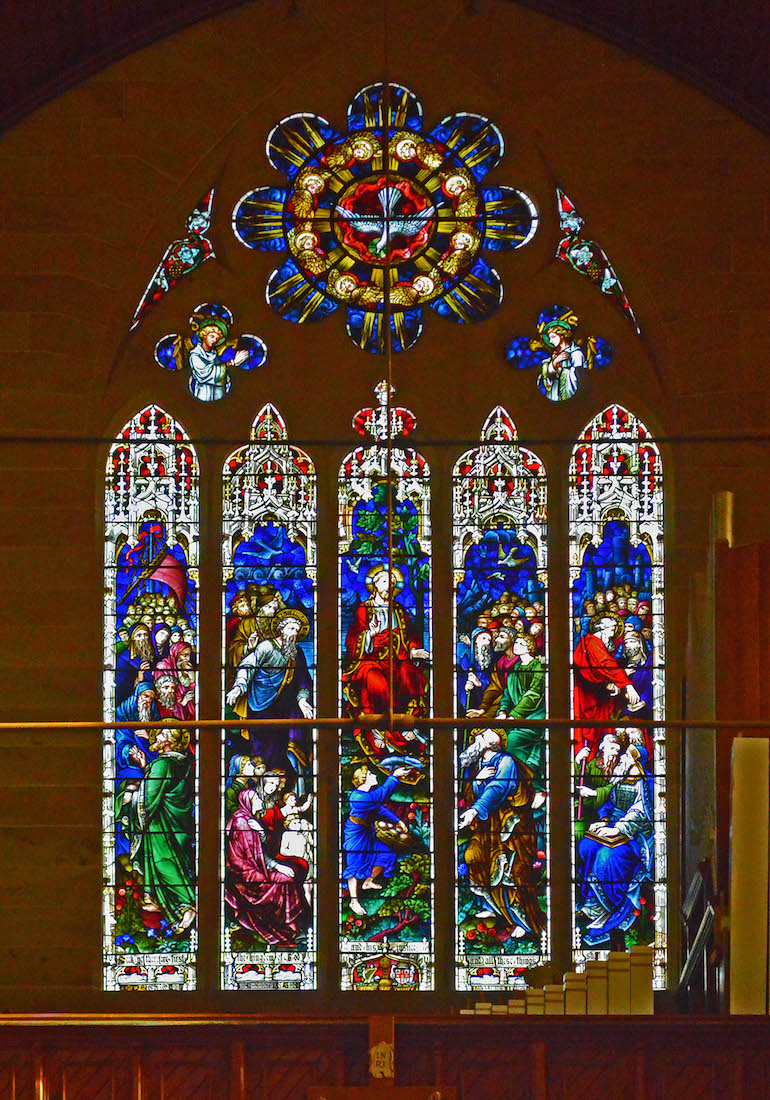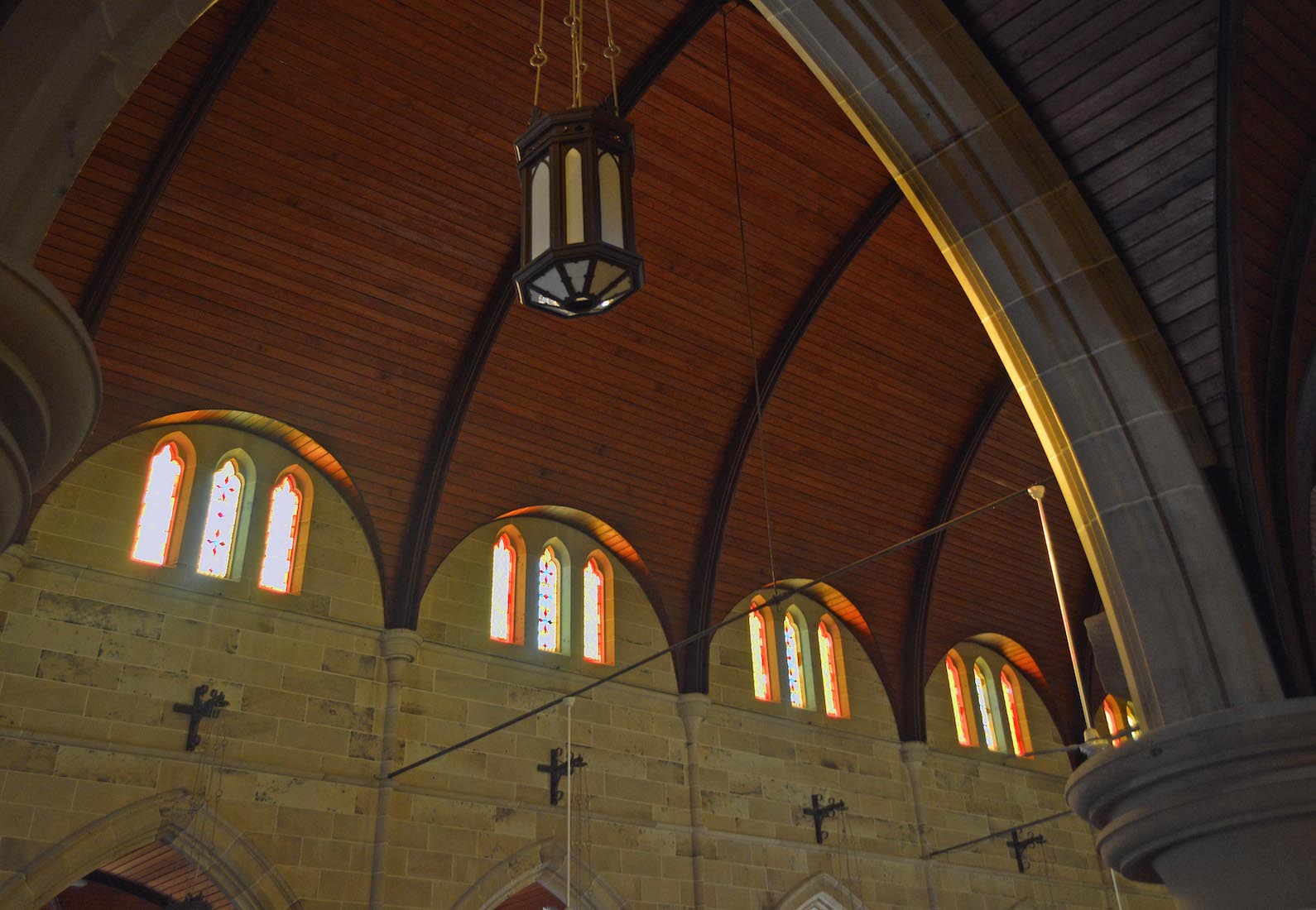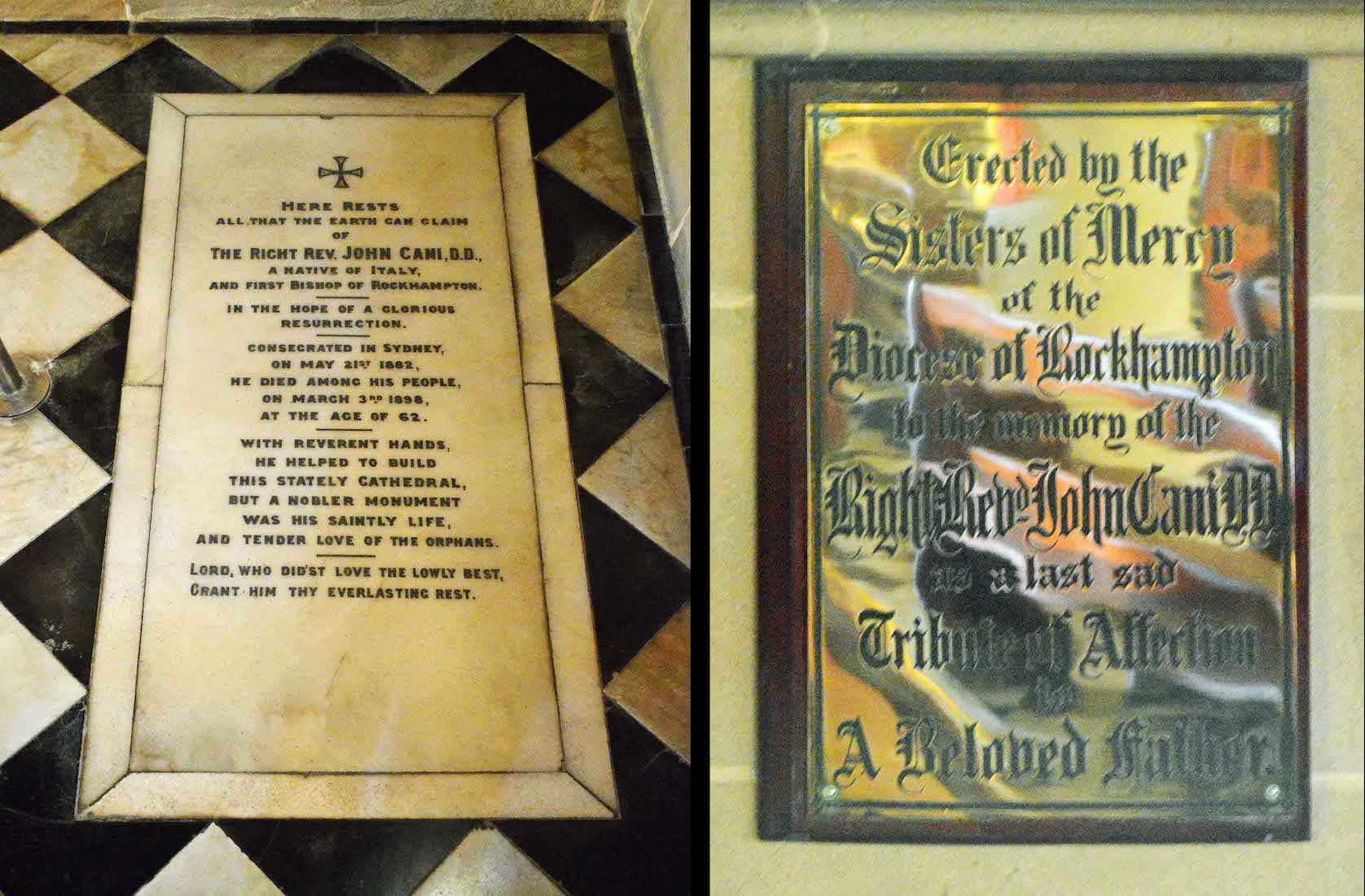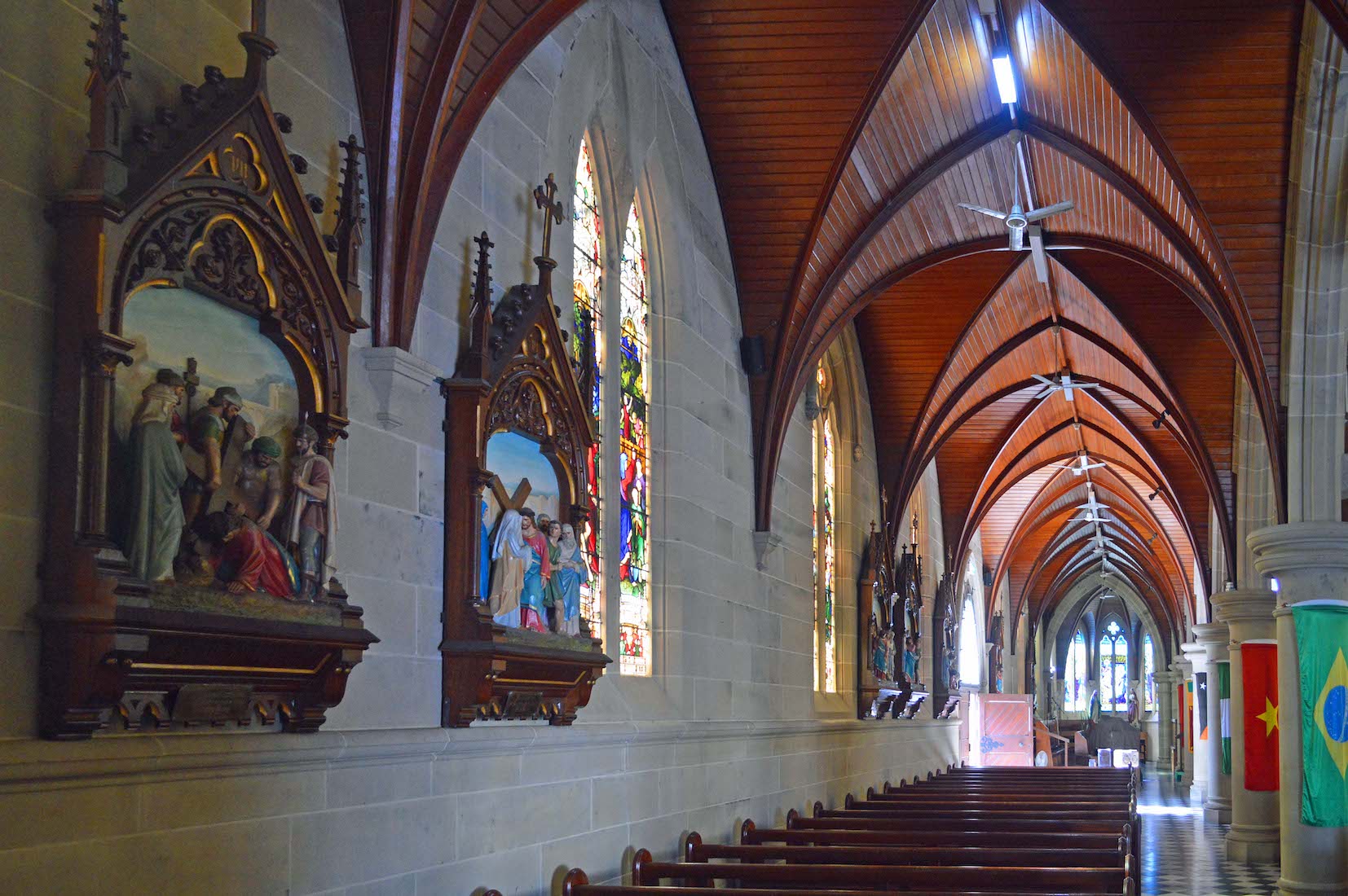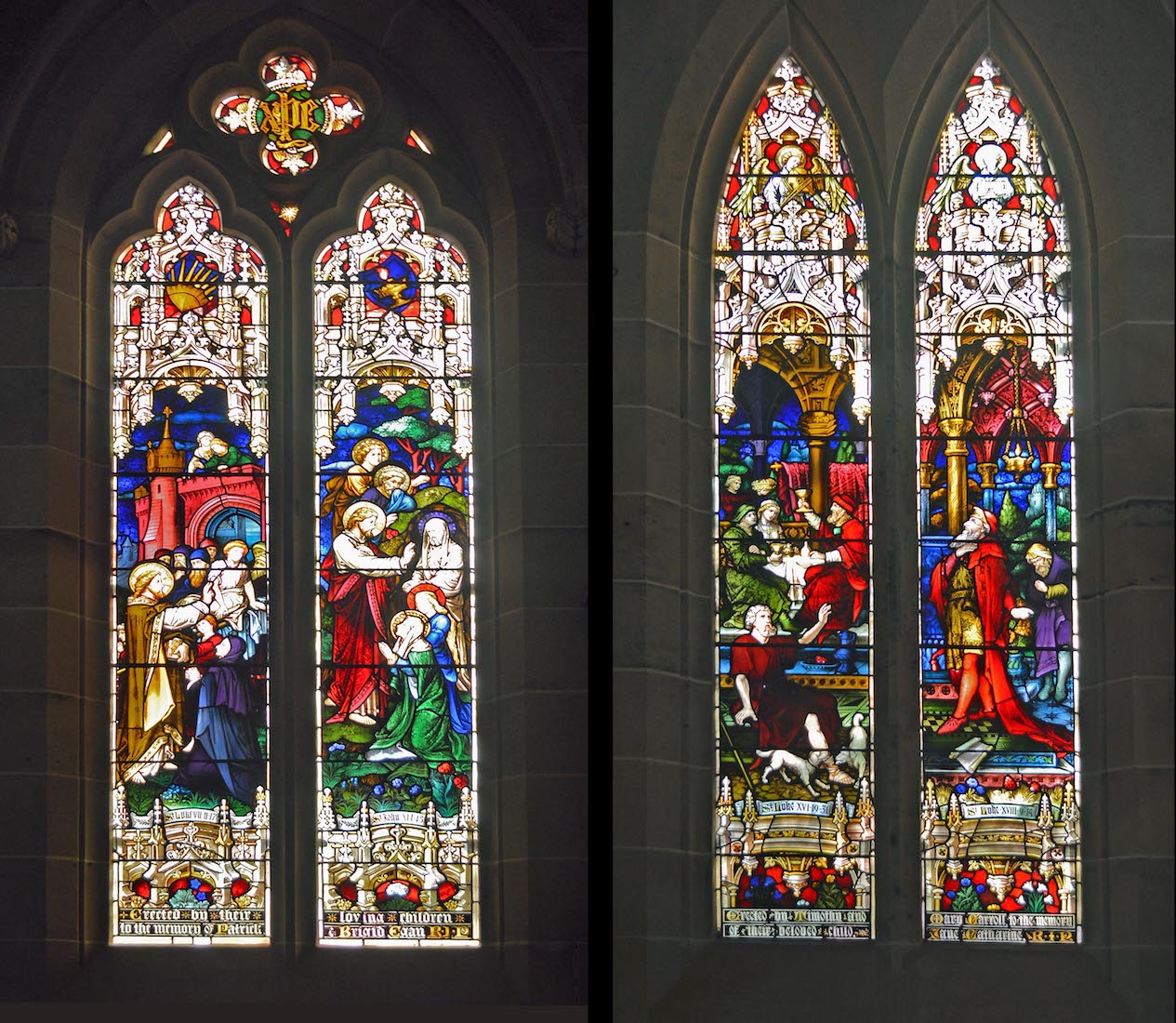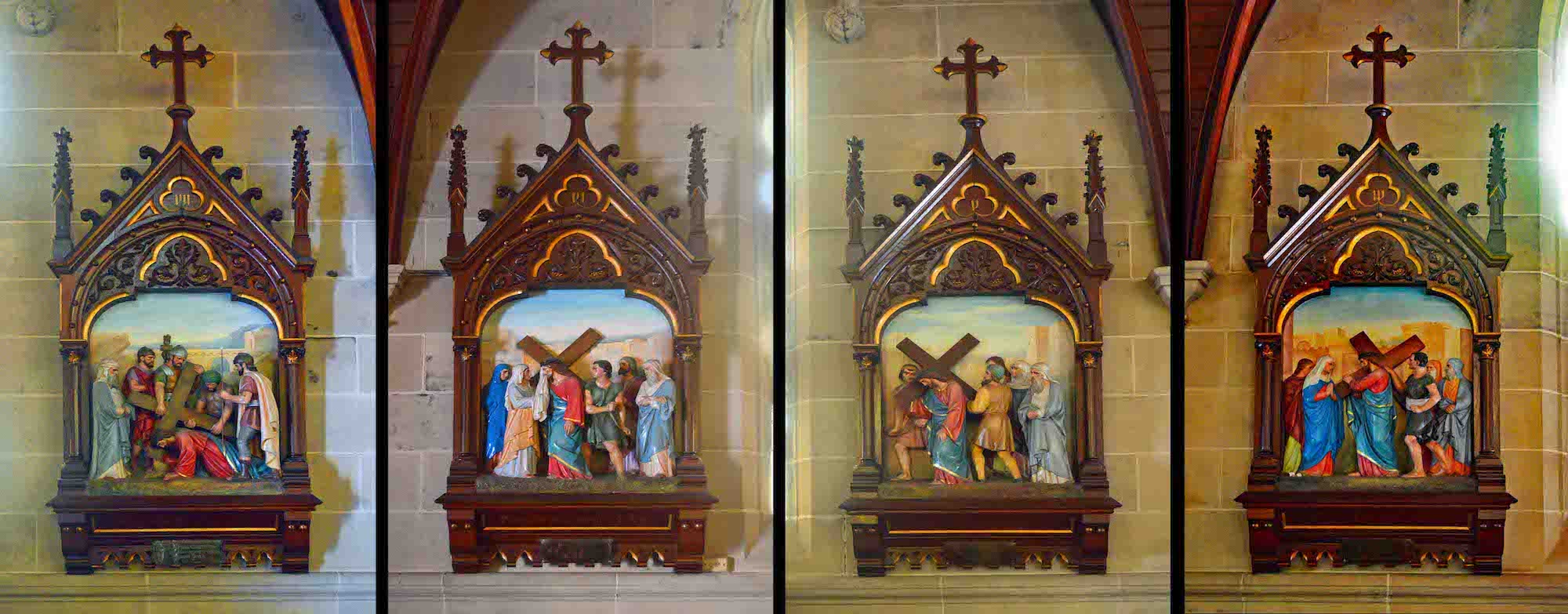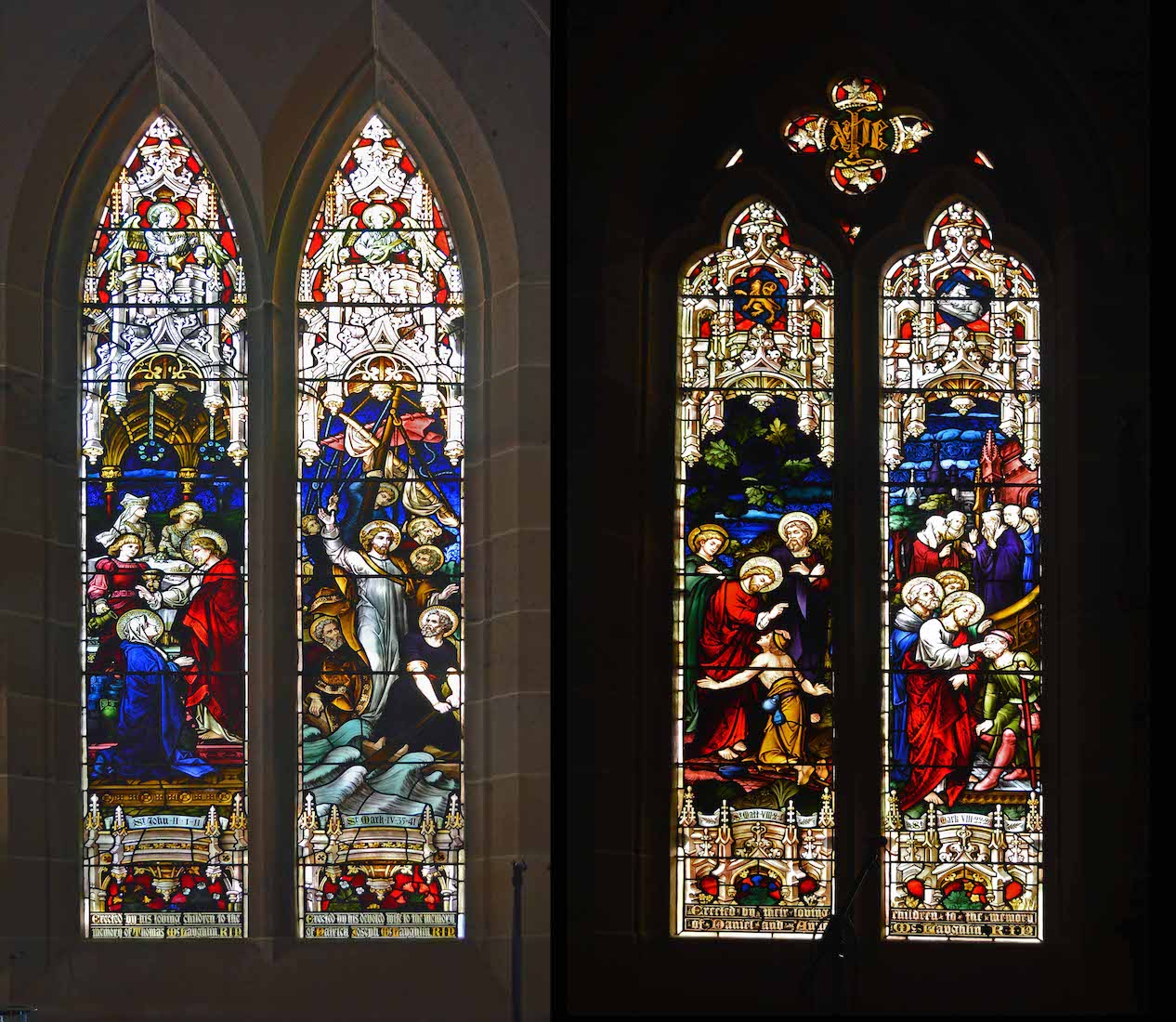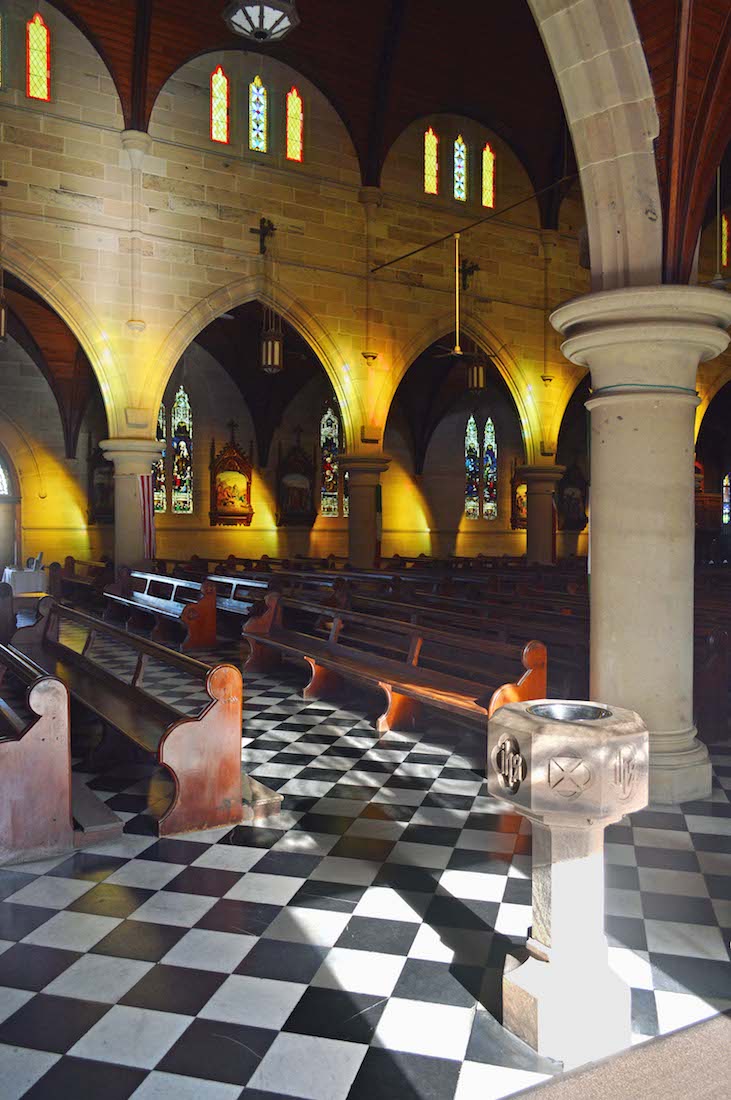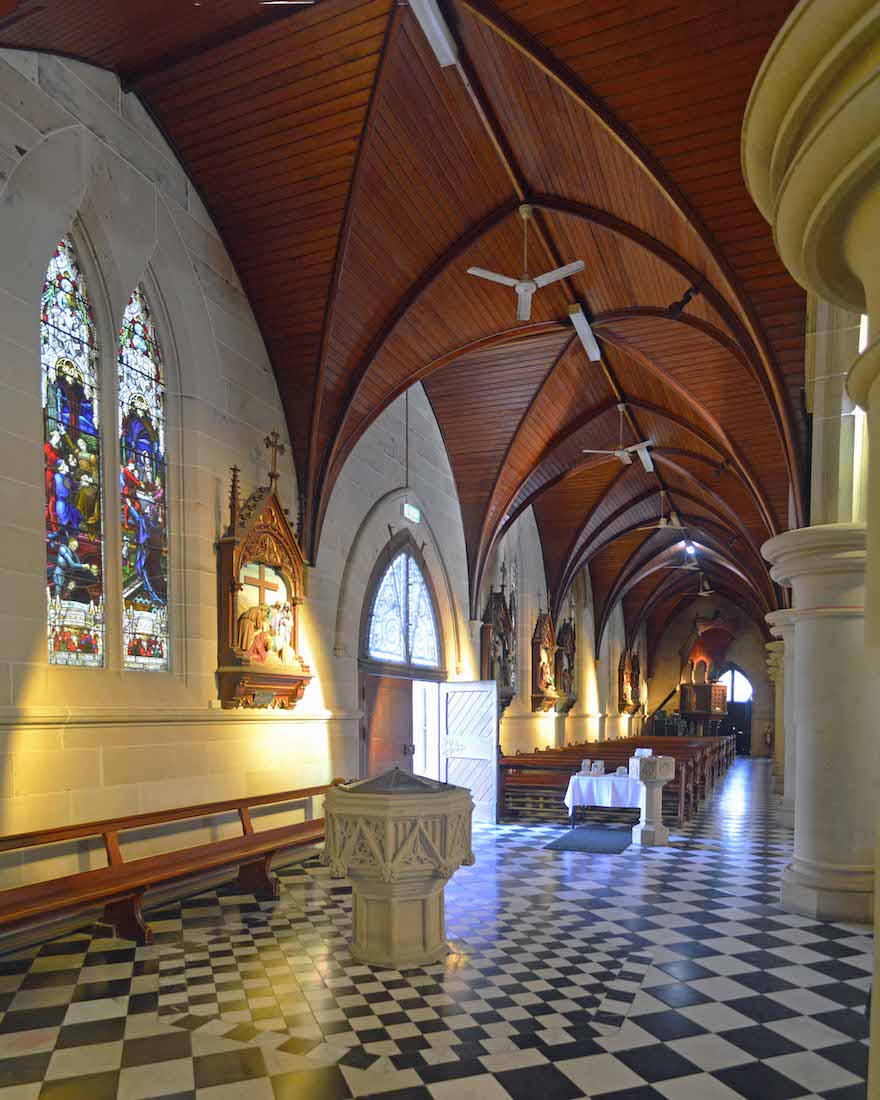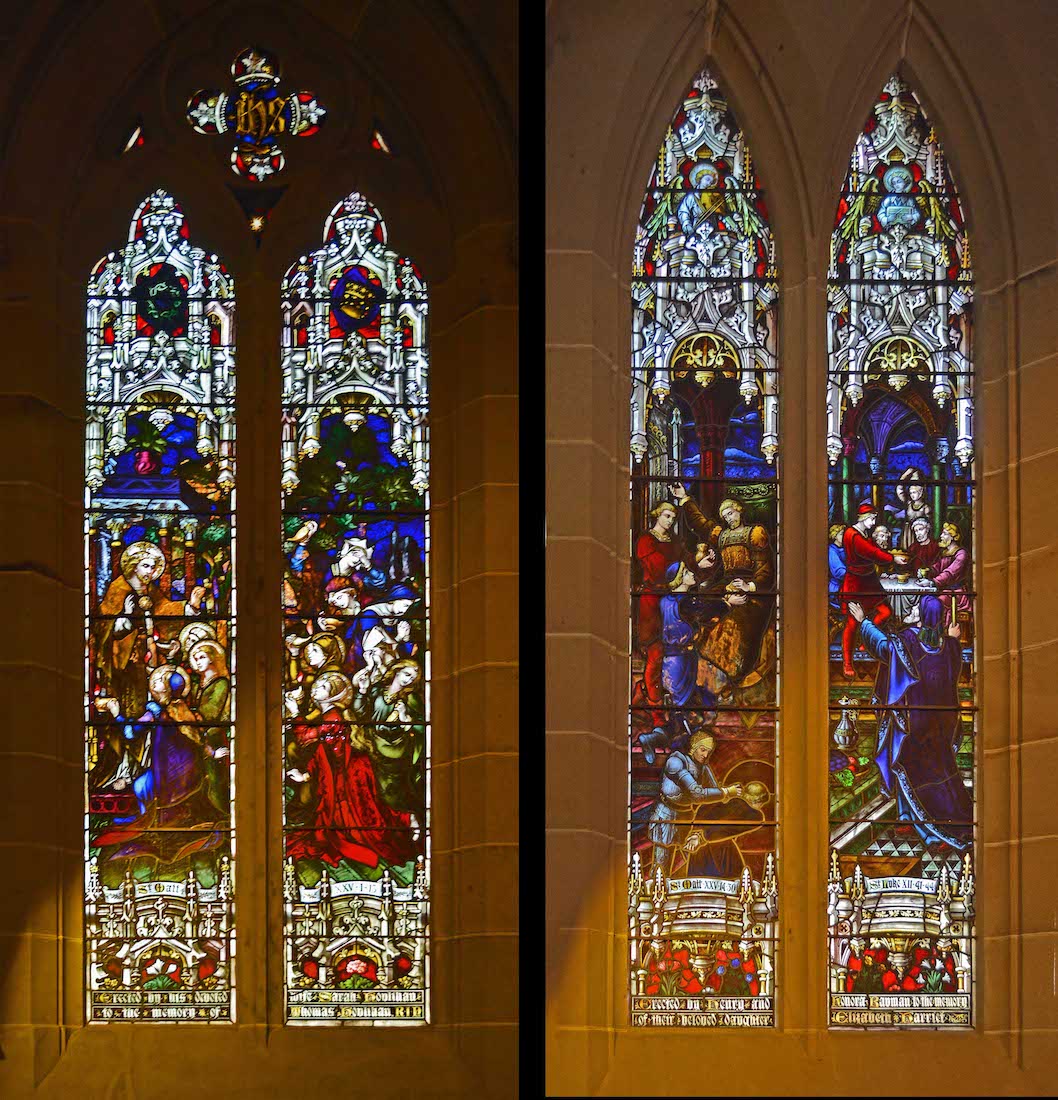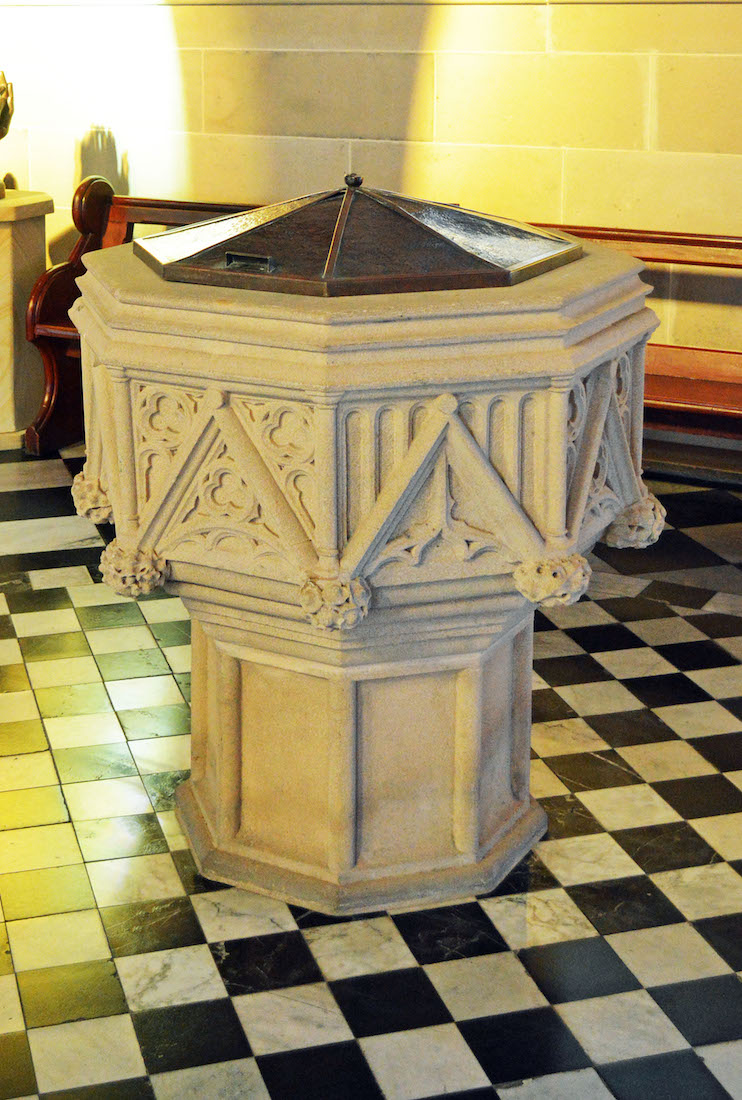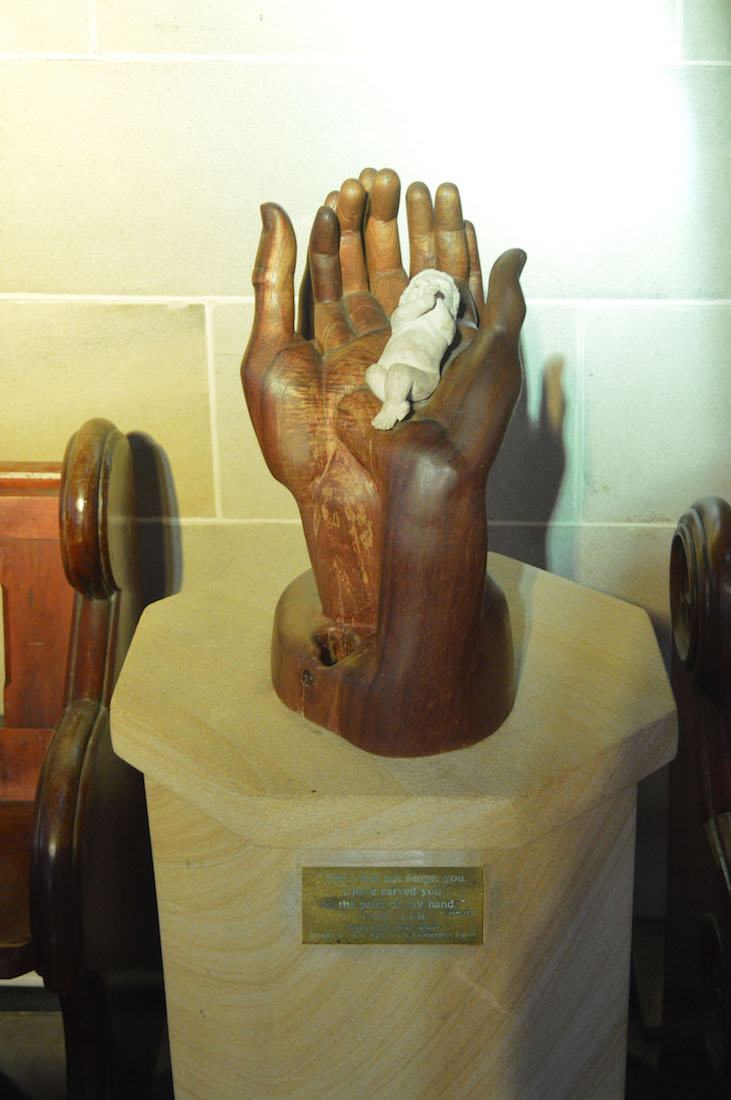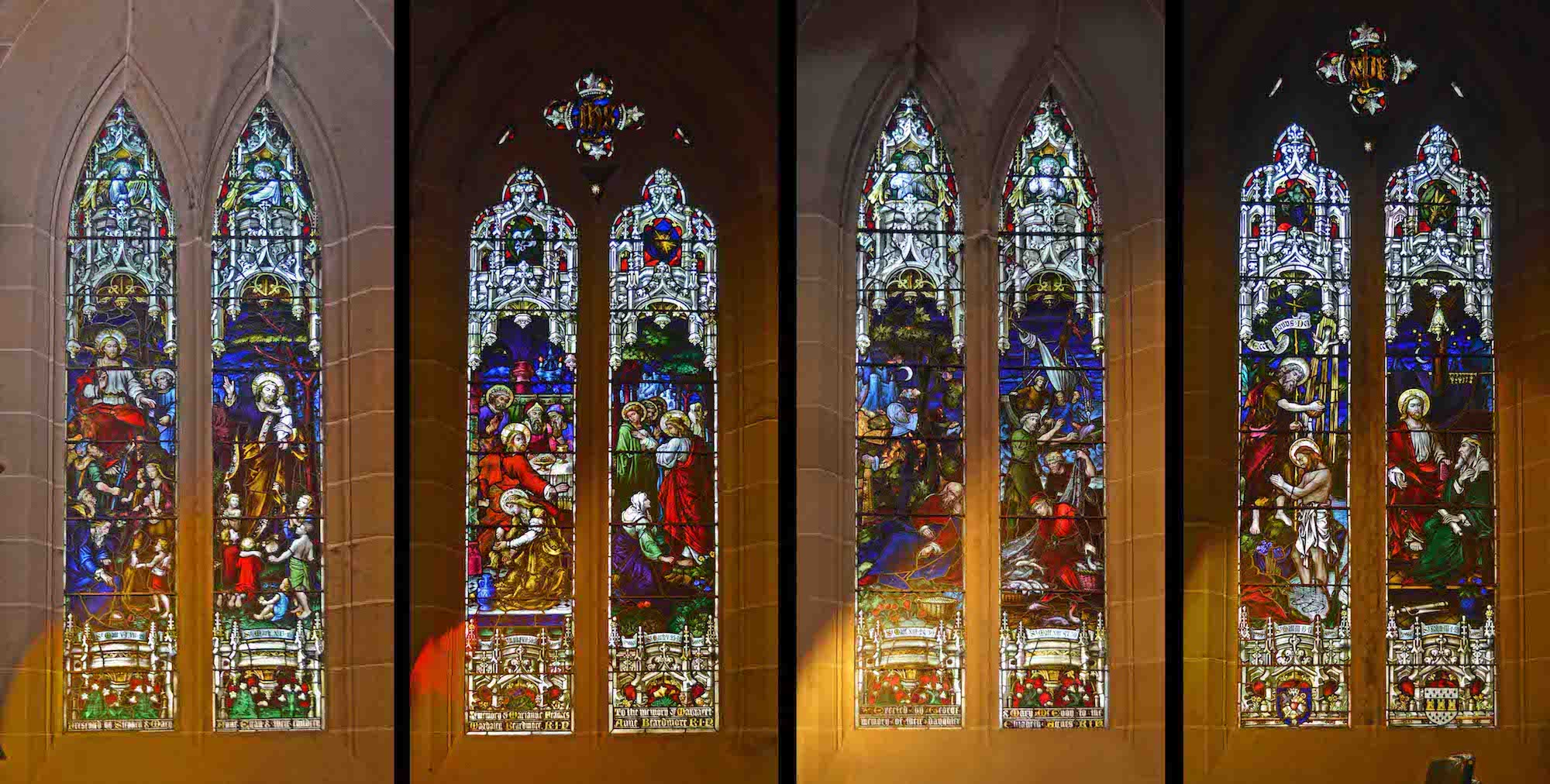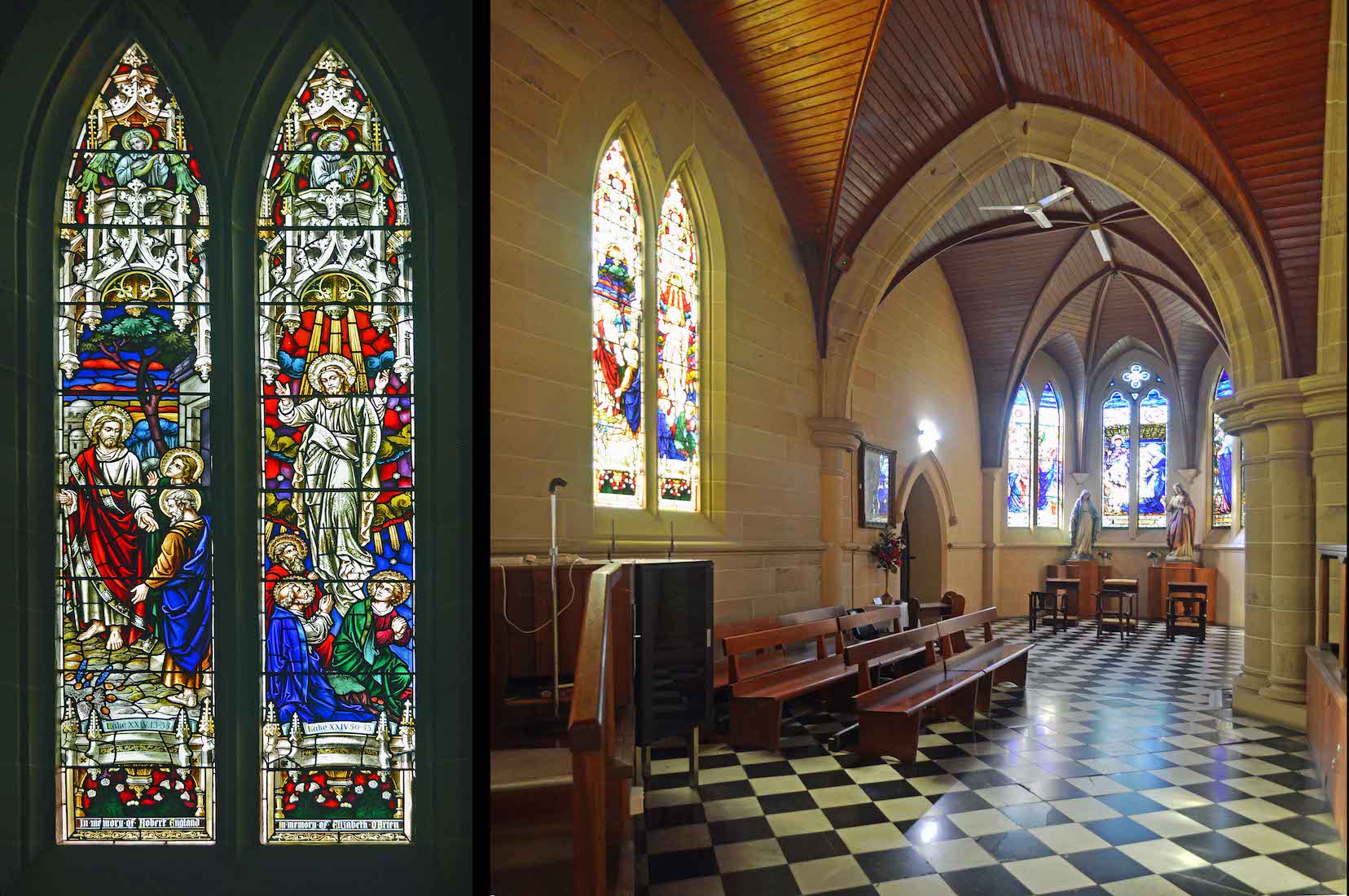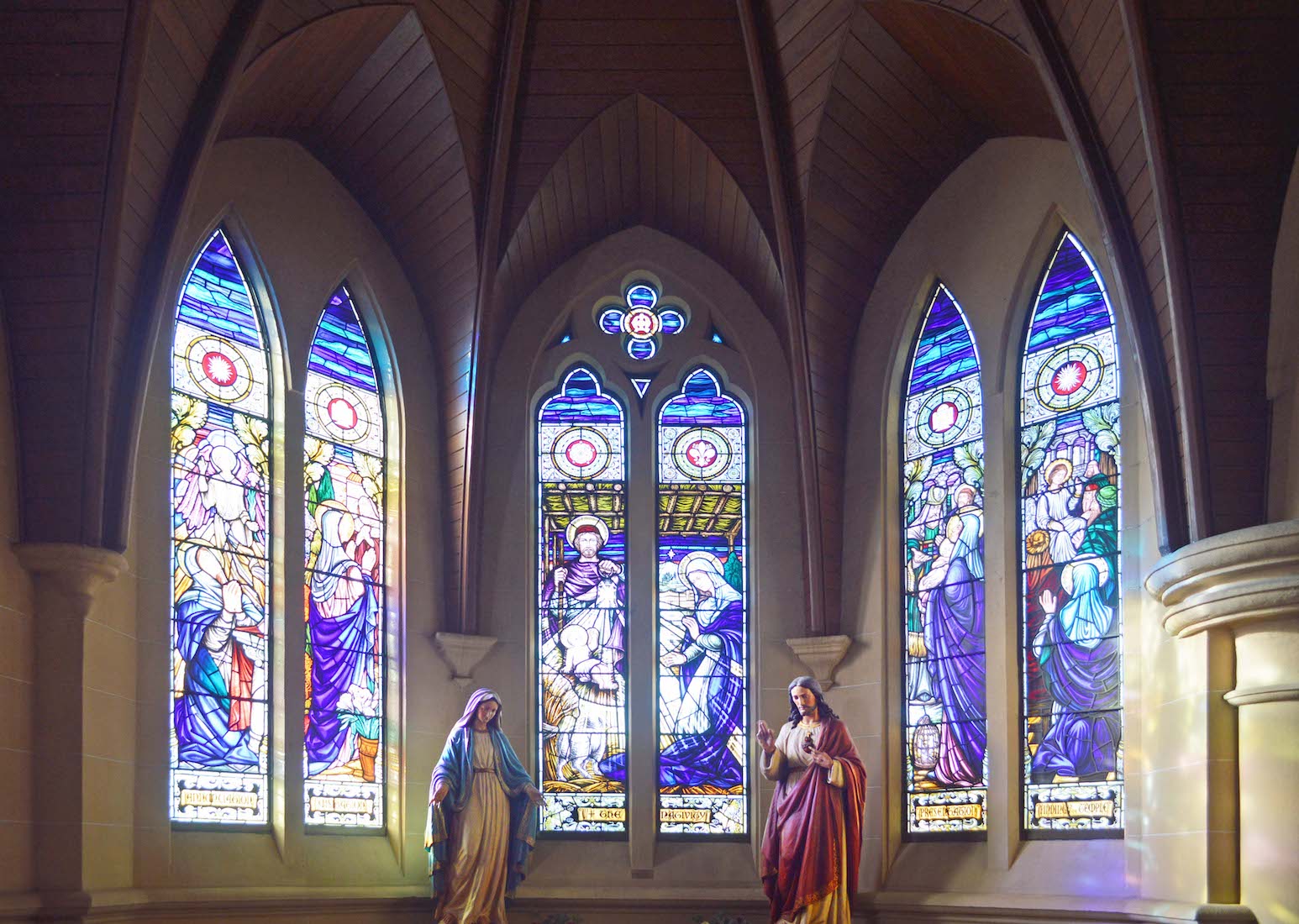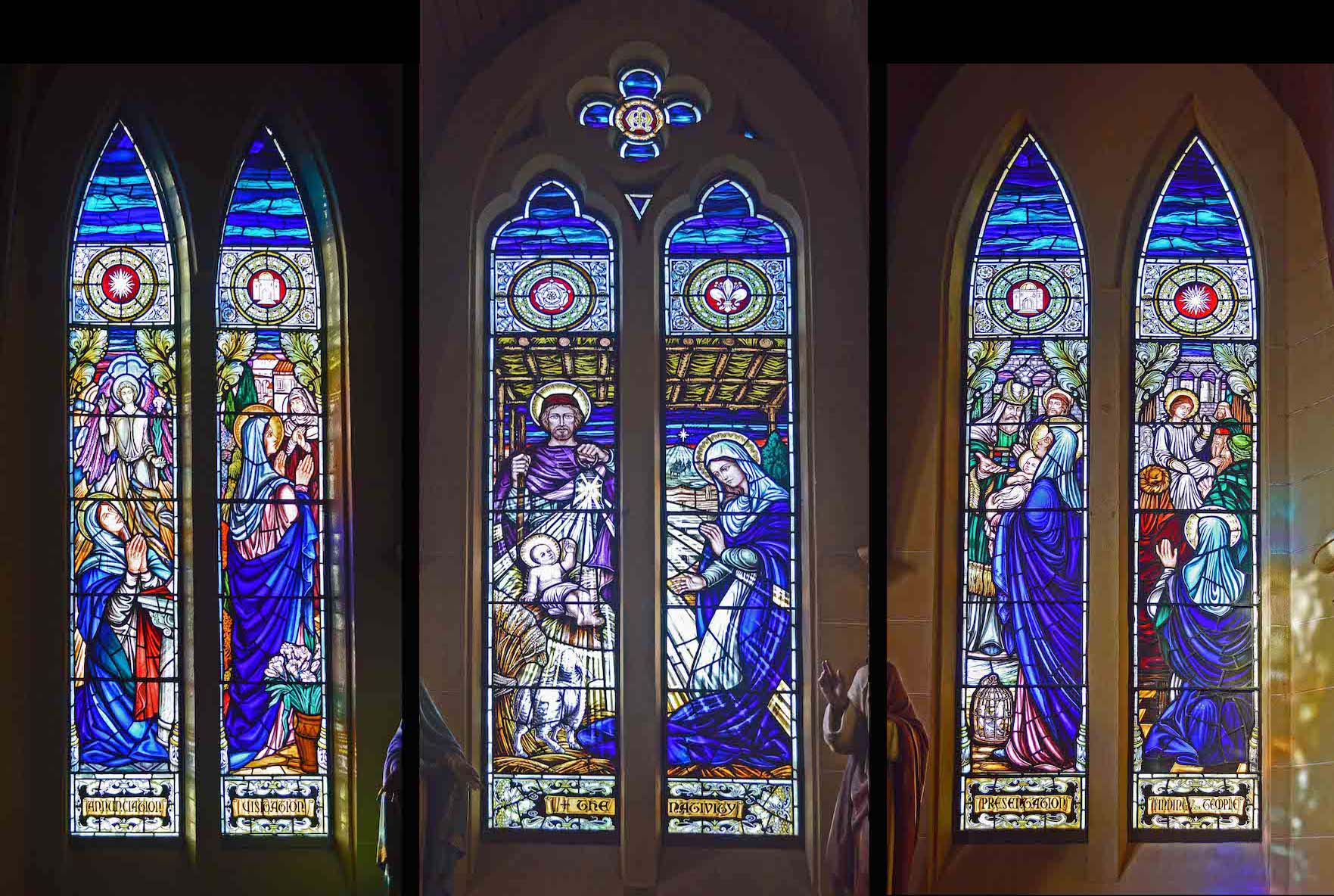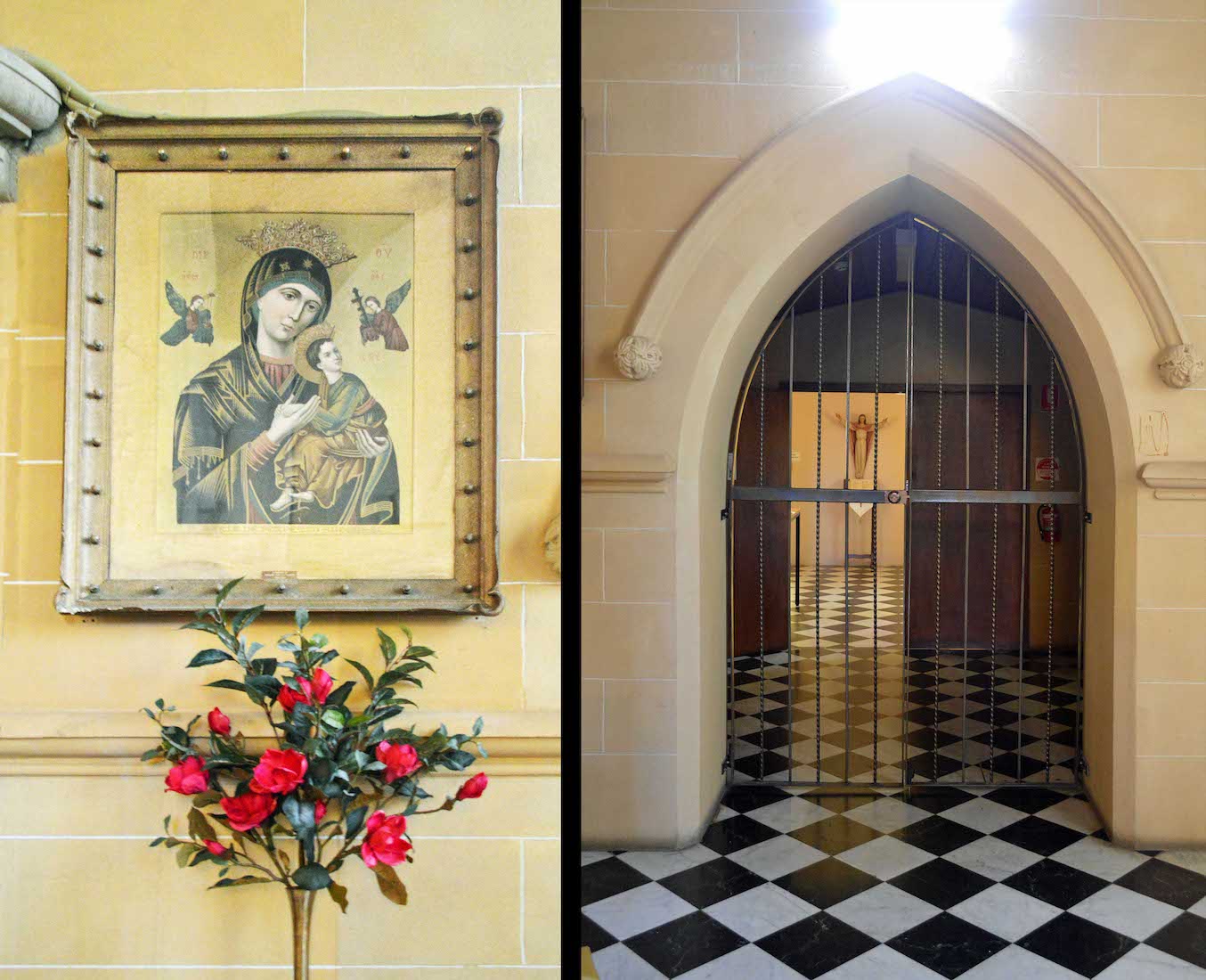22. ORGAN AND CRUCIFIX
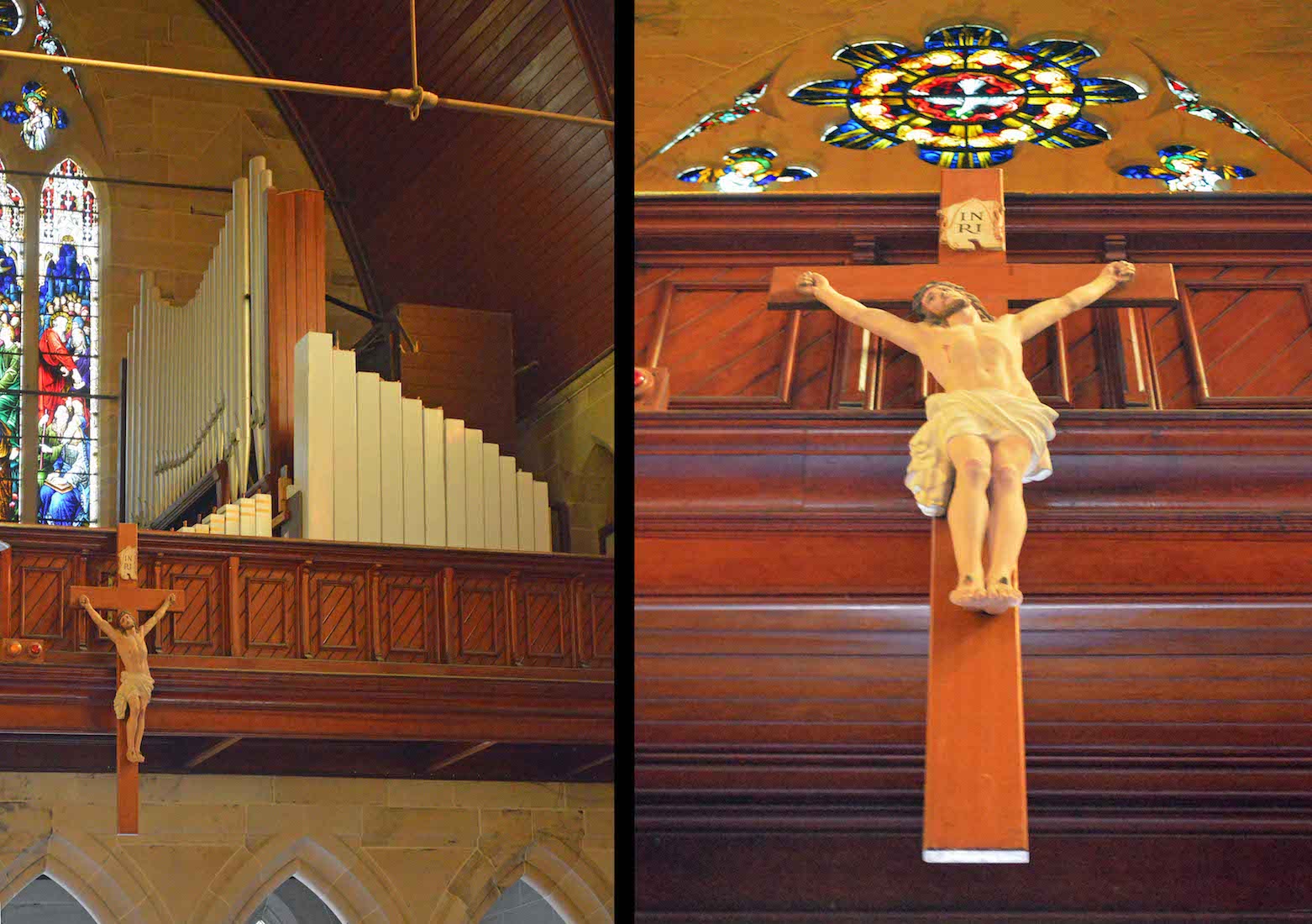
The organ was built in 1925–26 by Whitehouse Bros of Brisbane at a cost of £1320. The great organ has 58 notes, the swell organ 58 notes, and the pedal organ 30 notes. The organ was maintained regularly by Whitehouse Bros, and received major overhauls in 1938 and 1942. It was disassembled in the late 1970s and has not been used since around 1980.
23. CLERESTORY WINDOWS
The high clerestory windows give a good overall light to the building. The glass is essentially clear, the central lancets having a small cross pattern.
24. NORTHWEST NAVE
The Northwest entry has been converted into a confessional. The pattern of alternating stained glass windows and stations of the cross is continued on the North and South walls of the nave. In this corner of the nave (behind the column!) is a floor slab. There is also a brass plate which can be seen under the end window.
25. FLOOR SLAB, BRASS
The floor slab is a memorial for the First (Catholic) Bishop of Rockhampton, The Right Rev John Cani, D.D. who died in 1898 at the age of 62. The text includes: ‘With reverend hands he helped build this stately cathedral, but a nobler monument was his saintly life and tender love of the orphans.’ The brass plaque is also a memorial to John Cani.
26. NORTH NAVE WINDOWS
The window at left was installed in 1901 and illustrates the parable of the Lost Sheep (Luke 15:1–7) and the parable of the Prodigal Son (Luke 15:11-–32). The window at right illustrates the parable of the Good Samaritan (Luke 10:30–37) and the parable of the Workers in the Vineyard (Luke 20:1–16).
27. EAST ALONG THE AISLE
This view shows the North wall of the nave, looking towards the Lady Chapel. Towards the front of the nave, is a North doorway.
28. MORE NORTH NAVE WINDOWS
The next two windows were installed in 1902. The left window depicts Jesus raising the widow’s son (Luke 7:11–17), and Jesus raising Lazarus from the dead (John 11:145). The right window depicts the rich man and Lazarus (Luke 16:19–31), and the parable of the Pharisee and the Publican (Luke 18:9–14).
29. STATIONS OF THE CROSS
Shown here are four of the 14 Stations of the Cross which line the nave walls. The Stations show different stages of the final journey Jesus made to the Cross, and are an aid to meditation, particularly at Easter. Shown here from left are Stations: VII Jesus falls the second time; VI Veronica wipes the face of Jesus; V Simon of Cyrene carries the Cross; IV Jesus meets his Mother. All the Stations of the Cross were purchased in Europe in 1903.
30. MORE WINDOWS
Two more windows along this wall, installed in 1902. At left, The wedding in Cana (John 2:1–11), and Jesus calming the storm (Mark 4:35–41), and at right, Jesus healing the man with the skin disease (Matthew 8:2–4), and Jesus healing a man born blind (John 9:1–12).
31. ACROSS THE NAVE
We have now reached the North door, and look across to the South side of the nave. A stoup for holy water is at our right.
32. SOUTH NAVE AISLE
Crossing the nave, we come to the South aisle, here looking West. The wall has the same alternating pattern of windows and Stations of the Cross. In front of us is the baptismal font, and then the South door.
33. SOUTH NAVE WINDOWS
These are the two windows just East of the South door, both dating from 1902. At left is shown the parable of the ten bridesmaids (Matthew 25:1–13). The window at right shows the parable of the talents (Matthew 25:14–30) and the parable of the worthy steward (Luke 12:41–44).
34. FONT
The attractive baptismal font is octagonal and made of sandstone. The rite of baptism is regarded as the way of initiation into the Christian life and to the church. In this view we notice a shadow on the wall behind … a hand?
35. HANDS CARVING
In fact there are two carved hands, held together and holding a baby. There is a text from Isaiah 49:15, 16 : ‘I will not forget you. Behold I have carved you [or, written your name] on the palm of my hand.’
36. MORE SOUTH NAVE WINDOWS
Beyond the South door are four more stained glass windows. From left these show: Jesus teaching (Matthew 5–7), and Jesus blessing the children (Mark 10:13–14); Jesus at the home of the Pharisee (Luke 7:36–50), and Jesus heals the woman with a haemorrhage (Mark 5:25–34); Parable of the wheat and weeds (Matthew 1`3:24–30), and Parable of the dragnet ( Matthew 13:47–50); The baptism of Jesus (Matthew 3:13–17), and ‘You must be born again’ (John 3:1–5).
37. TO THE LADY CHAPEL
We next leave the nave and return to the East end of the North aisle. There is a Rodgers Infinity Organ here and some post-Vatican II choir stalls. Behind is a window installed in1946. Its colours are more muted than those in the other windows. It shows the Journey to Emmaus (Luke 24:13–35), and Jesus’ Ascension (Luke 24:50–53).
39. LADY CHAPEL WINDOWS
The windows show three events in the early life of Mary. From left we see: The Annunciation, in which the Archangel Gabriel appears to Mary; The Visitation, in which Mary goes to visit her cousin Elizabeth; The Nativity – the birth of Jesus; The Presentation, in which Jesus is blessed by Simeon in the Temple; The ‘lost’ Boy Jesus teaching in the Temple.
40. ICON AND ENTRY TO CHAPTER HOUSE
The doorway with its steel gate leads through to the Chapter House. In the background we can see the figure of the victorious Risen Christ. At left is the well known icon of ‘Our Lady of Perpetual Succour (Help)’. This is a Roman Catholic title of the Blessed Virgin Mary as represented in this celebrated 15th-century Byzantine icon.


